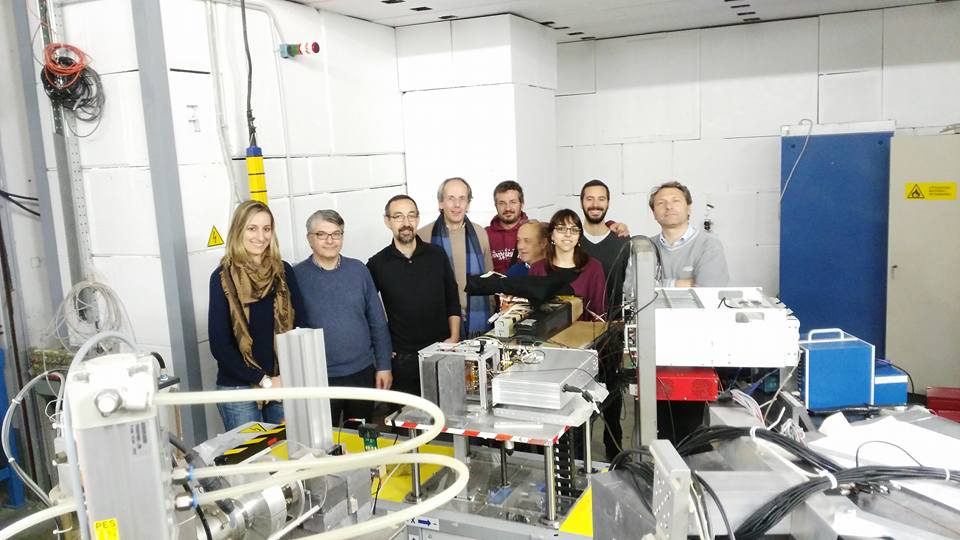In working to broaden the scope of our knowledge, experiments in subnuclear physics explore two different and complementary frontiers of our experimental limits: energy and luminosity. We therefore use ever-more powerful particle accelerators to achieve ever higher collision energies and the formation of new particles (as in the LHC). Alternatively (or, with the LHC, at the same time) we seek to produce the rarest events and to achieve an extreme fine-tuning of the precision measurements for such events. Generally speaking, experiments in subnuclear physics involve the use of large, highly complex equipment based on the latest technology in the field of detectors, electronics, data acquisition and computing systems. Collaborations to build this equipment involve hundreds of physicists from institutes and laboratories around the world (thousands in the case of the LHC). These projects are significant examples of real international cooperation, bringing together the world’s best physicists and providing an opportunity for young scientists to gain experience and learn fundamental skills. In this context, groups from the INFN contribute with their expertise and hold key positions in the relative decision-making processes.
National Scientific Committee 1
Experiments of the National Scientific Committe 1
ATLAS OSSERVA UN FENOMENO RARO CON PROMETTENTI SVILUPPI PER IL FUTURO DI LHC
La collaborazione scientifica ATLAS del CERN ha presentato alla conferenza internazionale di fisica delle alte energie, ICHEP 2020, nuovi risultati che aprono la via a un nuovo modo di usare l’acceleratore LHC come collisore […]
ATLAS E CMS ANNUNCIANO NUOVI RISULTATI SULLE PROPRIETÀ DEL BOSONE DI HIGGS
Gli esperimenti ATLAS e CMS del CERN hanno annunciato nuovi risultati che indicano che il bosone di Higgs decade in due muoni: particelle elementari di seconda generazione, simili agli elettroni ma più pesanti. I […]
L’ESPERIMENTO NA62 DEL CERN METTE ALLE STRETTE UN PROCESSO RARISSIMO
Un processo rarissimo è stato osservato con un ottimo livello di confidenza statistica e con una precisione senza precedenti dall’esperimento NA62 al CERN. Si tratta di un decadimento di particelle che vede un kaone […]
LHCB OSSERVA UN NUOVO TIPO DI TETRAQUARK
La collaborazione internazionale dell’esperimento LHCb che opera all’acceleratore LHC del CERN ha pubblicato oggi, 1° luglio, uno studio su arXiv che riporta la prima osservazione di una particella composta da quattro quark charm. Il risultato costituisce […]
SUPERKEKB CONQUISTA IL NUOVO RECORD MONDIALE DI LUMINOSITÀ
L’acceleratore SuperKEKB, al laboratorio KEK, a Tsukuba in Giappone ha stabilito un nuovo record mondiale di luminosità, raggiungendo i 2,4×1034 cm-2 s-1, e superando così il precedente record di 2,14×1034 cm-2 s-1 ottenuto nel 2018 e detenuto fino ad […]
NUOVA TECNICA APRE A FUTURO ACCELERATORE DI MUONI
La collaborazione internazionale MICE (Muon Ionization Coolin Experiment) ha pubblicato uno studio su Nature in cui annuncia di aver studiato per la prima volta un processo cruciale per la costruzione dei futuri acceleratori di […]
AL VIA PADME!
In questi giorni ha preso avvio l’esperimento PADME ai Laboratori Nazionali di Frascati dell’INFN progettato per la ricerca del fotone oscuro, una ipotetica particella che mette in comunicazione il mondo della materia ordinaria, descritto […]

